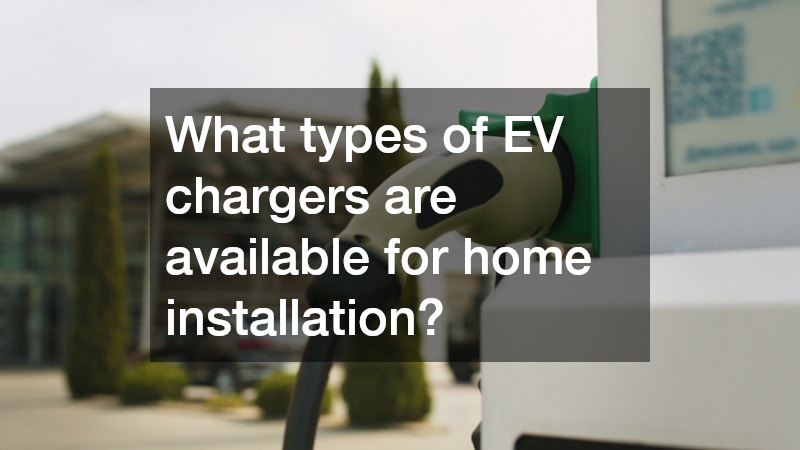
As electric vehicles (EVs) become more prevalent, installing an EV charger at home is quickly becoming a necessity for many homeowners. In this guide, we’ll provide comprehensive insights into EV charger installation, addressing the most common questions and concerns to help you make informed decisions. Whether you’re a new EV owner or considering upgrading your charging setup, this article aims to equip you with the knowledge you need.
What types of EV chargers are available for home installation?
Level 1 Chargers
Level 1 chargers use standard 120-volt outlets, making them the most accessible and cost-effective option for basic charging needs. Typically, these chargers add about 2 to 5 miles of range per hour, making them suitable for overnight charging.
Although they are slower than other options, they provide a manageable solution for those with short daily commutes.
Level 1 chargers are ideal for individuals who do not require a rapid recharge daily. They are easy to set up, requiring no special installation beyond a standard electrical outlet. For those who drive less than 40 miles a day, Level 1 chargers may be entirely sufficient.
Moreover, Level 1 chargers are portable and can be used with a typical household GFCI outlet. This makes them a versatile solution as they are easy to transport and use when traveling. However, for those who envision longer trips or plan to drive more extensively, a different level of charging may be necessary.
Level 2 Chargers
Level 2 chargers operate on 240 volts and provide faster charging speeds, ideal for daily charging and those who need to quickly recharge their EVs. They can recharge a vehicle in a fraction of the time compared to Level 1 chargers, typically providing around 10 to 60 miles of range per hour. This makes them an excellent choice for busy households where vehicle availability is critical.
To install a Level 2 charger, homeowners may require electrical upgrades if their home is not already equipped with a suitable outlet. While the initial cost can be higher, the investment in a Level 2 charger is often justified by the significant improvement in charging times. As the technology continues to evolve, costs are expected to decrease, making them more accessible to a wider audience.
How to choose the right location for your home EV charger?
Considers whether to install the charger inside a garage or outside, with factors like weather protection and accessibility in mind. An indoor installation, typically in a garage, offers added protection from weather elements, potentially extending the life of the equipment. A controlled environment also reduces the risk associated with vandalism or accidental damage to the charger.
Outdoor installations are often chosen for their flexibility and convenience, especially in homes where garage space is limited. However, it is crucial to ensure that outdoor units are weatherproof and installed in a sheltered location. Properly selected weather-resistant equipment can endure harsh climates and provide reliable service for many years.
Ultimately, the decision between indoor and outdoor installation depends on the specific layout and requirements of the home. Considerations such as ease of access, aesthetic impact, and protection of the unit are also vital. Professional assessment often helps in making the best decision tailored to the homeowner’s specific situation.
What are the costs and incentives associated with EV charger installation?
Provides a detailed breakdown of potential costs involved in installing an EV charger, including equipment and labor fees. Equipment costs can vary greatly, depending primarily on the type and brand of charger selected. On the other hand, labor charges hinge on the installation’s complexity, which is influenced by factors such as distance from the power source and necessary electrical upgrades.
Homeowners should also consider potential costs related to permits or inspections, which local regulations might require. These additional expenses ensure that the installation meets safety standards and legal requirements. Factoring in such costs from the onset can help avoid unforeseen financial surprises.
Nevertheless, while the initial investment may seem significant, it often increases convenience and property value. Many electric vehicle owners find that the ease of home charging simplifies their daily routine and adds to the overall appeal of their property. As the market for EVs grows, the demand for installed chargers is expected to rise, potentially driving installation prices down over time.
With the information provided, you now have a clearer understanding of EV charger installation at home. From choosing the right charger to finding the best location and understanding the costs involved, each decision will contribute to a seamless charging experience. Take advantage of available incentives and position yourself for significant long-term savings while contributing to a more sustainable future.




